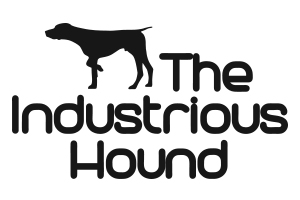Socialisation - it's not what you think it is
What socialisation is:
Socialisation is simple. It just means your dog is competently led through and safely exposed to as wide a range of situations as possible. That helps him function confidently and calmly in the world.
What socialisation is not:
Socialisation doesn’t just mean that a dog gets on well with others. It’s much bigger than that.
Typically, people will think they are socialising a dog by:
forcing puppies and dogs on leads to say ‘hello’
having dogs entertain themselves in the middle of the park
taking a dog to a puppy group or day care as a means to socialise
limiting walks to the same parks
In those situations, the dog is forced into unnatural confrontation, potential conflict over resources, association of other dogs as the main source of entertainment, and a limited experience of the world. It can all too easily end up with you thinking ‘my dog’s aggressive’, ‘my dog doesn’t like other dogs’, ‘my dog won’t come back’ or ‘my dog’s afraid of…’. Unfortunately, things can quickly spiral out of control.
Some top tips for a well-socialised dog:
But it’s not difficult to set your dog up well. Here are few tips to get you started.
Teach your dog the world is OK. You teach your dog what to fear and how to react. The small window of time from you picking up a new puppy to adulthood is the key time to send the right messages about the rules of the world and how it all works. And that it’s not a scary place.
Make your dog’s world huge. Take your dog to as many places as possible - to pubs and cafes, on trains, in cars, to forests, beaches and different parks. The more situations the better. The more you do, the easier it is, and the happier your dog is, and the more places you can go.
Lead your social order. Be the leader of your dog’s social structure. Communicate in a way that a dog understands so your dog knows you’re competent and in control. He will trust you, and your judgement and guidance when you come across new and challenging situations.
Be calm and quiet, and carry on. Dogs really don’t communicate like humans. When the world is safe and there’s nothing to worry about dogs are quiet. Humans attempt to ‘reassure’, often by talking and touching. For dogs though, invariably, it makes things worse. It creates tension and usually sets up a chain of events that leads to ‘fear’, ‘aggression’ and general non-sense. Instead, carry on as if nothing is happening - that means you don’t talk, you don’t touch and you don’t meet your dog’s eye. Nothing to see! Carry on!
Stop stopping. When you stop in the street to make your dog say ‘hello' to another dog, typically on a lead, you create a potentially stressful, somewhat unnatural and forced situation, and one that the dog cannot control - because it's on a lead. Instead, just keep going - dog’s should be allowed to meet on their own terms, off-lead, in an open area.
Picking up a dog is more about your fears than the dog’s. It often creates bigger problems than it solves, and usually makes the dog more stressed because you’ve now trapped it and denied it self-determination.
Let your dog stand on his own four paws. Coming across new situations and overcoming them is how your dog, and we, learn about the world and how to function in it. Regularly put your dog into new, challenging situations in a safe way. Don’t rescue your dog, like by picking him up, don’t solve their problems or avoid new or challenging situations because your dog reacts ‘surprised’ or in a way that you interpret as ‘afraid’ the first time he meets them.
Don’t project your feelings. If you find yourself being the ‘helicopter parent’ set aside your fears and anxiety about your dog. Much like when we think we know what other humans are thinking, we get it wrong with dogs too! They do not see the world like you, they do not have your emotions, and do not feel what you feel.
A typical scene from an Australian park - and a source of a whole heap of non-sense
Make walks meaningful and fun. A good walk is an opportunity to grow the bond between you and your dog. A walk is also an opportunity to reinforce learning and get mental and physical exercise for you and your dog.
Standing in the middle of a park while dogs entertain themselves with other dogs, and perhaps a ball or stick, is invariably a recipe for undesirable behaviour as dogs compete for resources, and are forced into confrontations. Unfortunately, people make the situation worse by crowding dogs and shouting when things start to go awry.
Instead, get on with a walk, don’t hover, keep moving, mix things up, make yourself the focus of the dog's fun with games that reinforce and reward positive behaviour and integrate your ‘training’ into the activities. Get body and mind - yours and your dog’s - working so your dog is fulfilled, and has a positive outlet for his natural behaviour and drives. Read more about good walks: what does a productive walk look like?
Want to learn more?
If you'd like to learn how to make your and your dog’s life more fun and relaxed or you'd like your dog to go on fulfilling and mentally and physically stimulating walks, click on the button below to get in touch.



